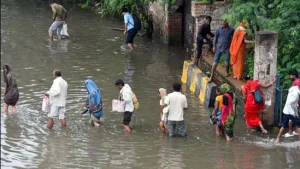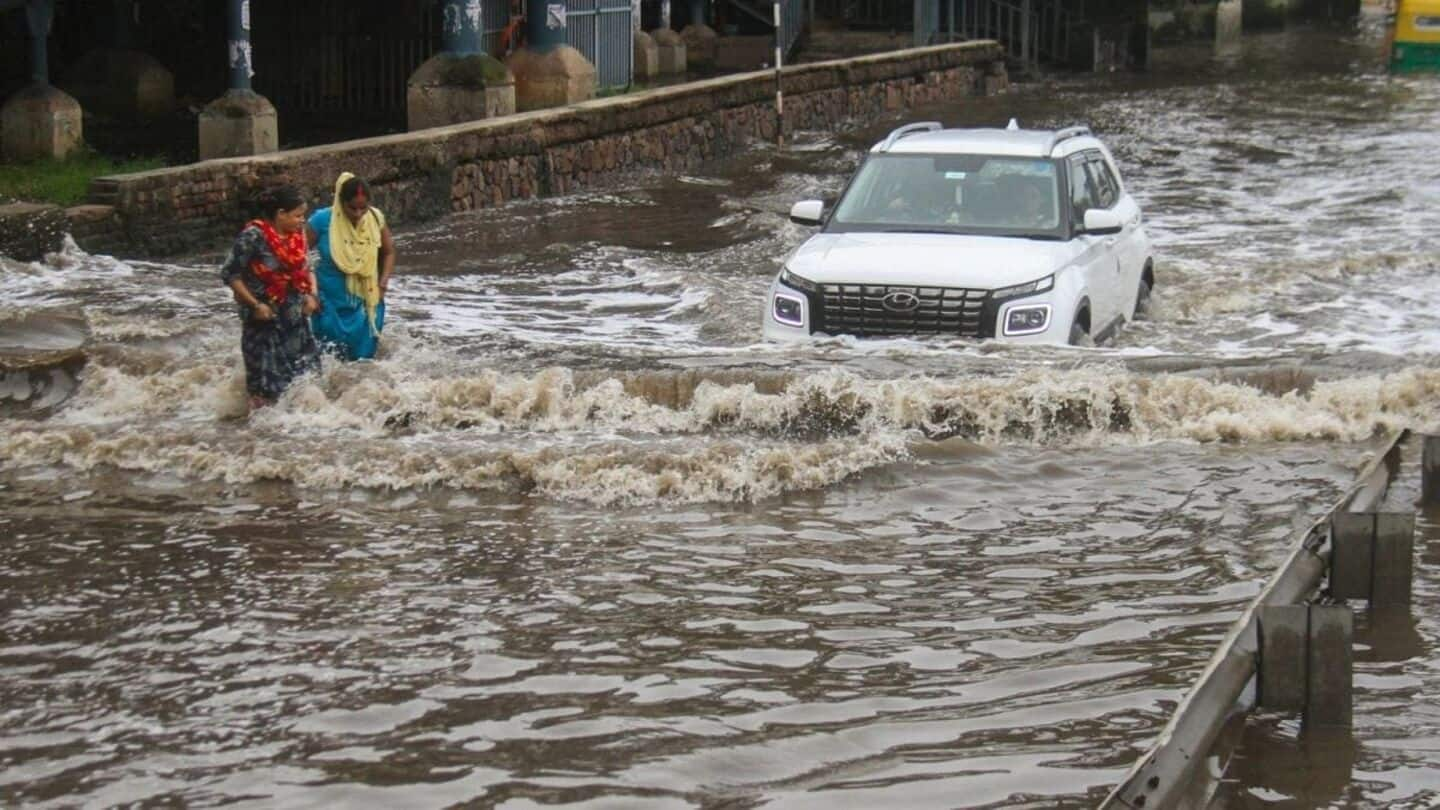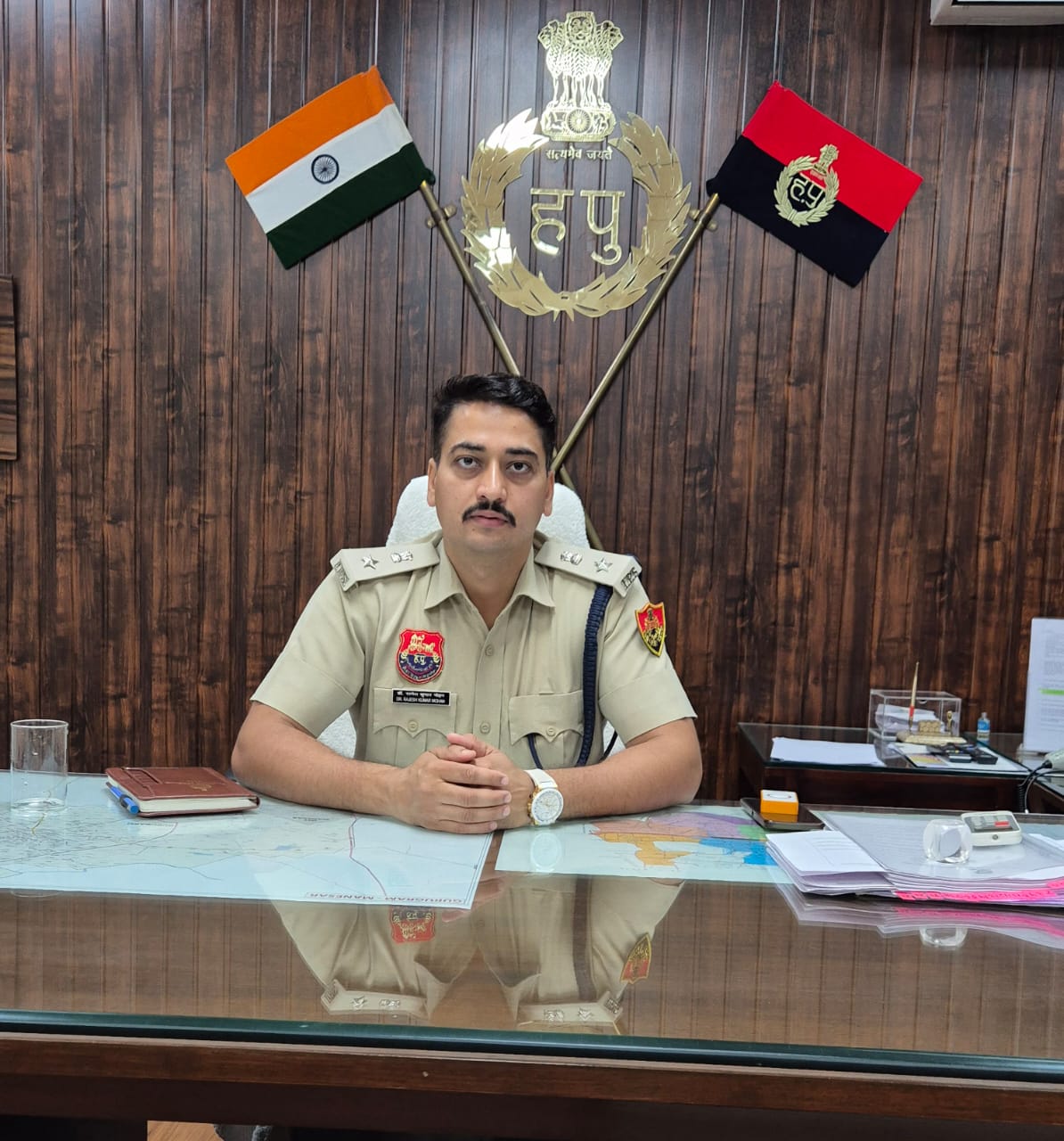Gurugram, Haryana – The catastrophic Gurugram floods on Wednesday night have once again exposed the fragile infrastructure of India’s so-called Millennium City, claiming eight lives and causing widespread chaos across the region. The devastating two-hour downpour transformed one of India’s wealthiest cities into a death trap, with victims succumbing to electrocution, drowning, and traffic accidents amid the urban deluge.
The Night of Tragedy: Gurugram Floods Claim Multiple Lives

The Gurugram floods began their deadly toll at 9:30 PM when Akshat Kumar Jain, a 30-year-old software engineer, became the first victim. While riding home from the gym on Ghasola Road, his motorcycle slipped on waterlogged tarmac, causing him to skid into a pole with exposed live wires submerged in calf-deep water. Despite eyewitnesses attempting rescue using bamboo poles, Jain could not be saved and was declared dead at a private hospital.
The tragic pattern continued throughout the night as the Gurugram floods claimed more lives. Pawan Kumar, a 26-year-old food delivery executive, stopped near Plot 22 in Sector 18 to buy a snack when disaster struck. His final words, “Bachao, bachao” (Save me, save me), were heard over the phone before the line went dead. His body was later found next to an electric pole submerged in water, with a nearby shopkeeper suffering burns while attempting rescue.
Infrastructure Failures During Gurugram Floods
The Gurugram floods revealed catastrophic infrastructure failures that have plagued the city for years. At 10 PM, 22-year-old Prashant Mishra was electrocuted while climbing rain-slicked stairs in Arjun Nagar’s Sector 8. He had touched a railing charged by a frayed wire running through ankle-deep water, highlighting the dangerous electrical hazards that emerge during flooding.


The most shocking incident occurred at 10:30 PM when 28-year-old auto-rickshaw driver Shailender Kumar was “sucked” head-first into an uncovered roadside manhole near Sispal Vihar in Sector 49. The powerful current in knee-deep water pulled him into the deadly trap, with locals spotting his body minutes later. This tragedy prompted a negligence case against Municipal Corporation of Gurugram (MCG) employees.
Road Collapse and Transportation Crisis
The Gurugram floods caused severe transportation disruptions, with the Southern Peripheral Road (SPR) slip-road near Sectors 75-75A collapsing for the third time in just over a year. A truck carrying beer crates was half-swallowed by the crater, with engineers blaming water infiltration near an under-construction drain for the collapse. This incident created massive traffic jams from Vatika Chowk to NH-48.
Also Read: Radhika Yadav Murder: How Music Video and Instagram Reels Triggered Brutal Murder?
At 3:30 AM, the Gurugram floods claimed another victim when a taxi carrying airline employees crashed into uprooted concrete median blocks on Khandsa Road. The driver, blinded by rain and glare from headlights on the water’s surface, never saw the submerged obstacle left behind by contractors working on storm drains. Vanshika, 24, died on the spot, while the driver and another guard were hospitalized with fractures.
Residential Areas Submerged in Gurugram Floods
The Gurugram floods transformed residential neighborhoods into disaster zones, with households across the city experiencing severe waterlogging. In Palam Vihar, Sushant Lok, Heera Nagar, and Sectors 5, 6, 10A, and 15, residents woke up to find their living rooms flooded, basements submerged, and sewage flowing uphill. In Palam Vihar’s C-Block, drains stood taller than the lanes they were supposed to empty, pushing effluents into homes.
The most striking image of the Gurugram floods emerged from the Rajiv Chowk underpass, which transformed into a deep, debris-laden pool after hours of torrential rain. Water levels rose above car windshields, submerging vehicles and leaving commuters stranded. Visuals of people wading through waist-deep water as emergency responders struggled to reach them went viral on social media, highlighting the scale of the chaos.
Teen Drowning Tragedy in Mining Pit
The Gurugram floods extended their deadly reach to Bhondsi’s Aravalli hills, where eleven teenagers visited a disused mining pit that had overnight turned into a rain-filled pool. Three young men—Ashish Kumar, Surjeet, and Devender, all aged 16 or 17—slipped under the water and drowned. Villagers retrieved their bodies, with village sarpanch Shyam Lal lamenting, “We’ve asked for these pits to be fenced, but no one listens.”
Emergency Response and Official Reactions
The Gurugram floods prompted immediate emergency response measures, with Deputy Commissioner Ajay Kumar visiting multiple flooded locations including Vatika Chowk, Hero Honda, Subhash Chowk, Palam Vihar, Sushant Lok, and the collapsed SPR section. Wading through ankle-deep sludge with MCG engineers, he promised an audit of all live-wire hazards and open drains within 48 hours.


DCP (traffic) Rajesh Kumar Mohan reported that police personnel remained deployed at more than 100 locations until 12:30 AM Thursday for controlling traffic movement. Over 222 vehicles had broken down during the Gurugram floods, requiring traffic police assistance for towing operations.
Corporate Impact and Work-From-Home Advisory
The severity of the Gurugram floods prompted the Deputy Commissioner to issue an advisory to all corporate offices and private institutions, urging them to allow employees to work from home on Thursday. This decision reflected the widespread disruption caused by the flooding and the city’s inability to maintain normal operations.
Systemic Planning Failures Exposed
The Gurugram floods have once again exposed the threadbare fabric of civic planning in what is supposed to be a world-class urban center. MCG commissioner Pradeep Dahiya acknowledged that the city received 133mm of rainfall in 90 minutes, with teams clearing 40 major choke points overnight. However, this response highlighted the reactive rather than proactive approach to urban planning.


The recurring nature of flooding disasters raises fundamental questions about what it takes for one of India’s wealthiest, fastest-growing cities to prepare for something as predictable as rain. The Gurugram floods demonstrate that despite years of promises and investments, the city’s infrastructure remains woefully inadequate.
Legal Action and Accountability
Multiple FIRs have been registered in connection with the Gurugram floods casualties. Police booked officials of the private power distribution company for negligence under IPC Section 304-A in Akshat Kumar Jain’s death. A case of causing death by negligence was filed at Sector 37 police station for Vanshika’s death, while negligence cases were filed against MCG employees for the manhole drowning incident.
Final Statements: A City’s Recurring Nightmare
The tragic Gurugram floods serve as a stark reminder of the urgent need for comprehensive urban planning reform. As officials and politicians continue to point fingers and deflect blame, the promise of a world-class urban center remains shattered in the deluge. The eight lives lost in this preventable tragedy demand immediate action to address the systemic failures that continue to plague India’s Millennium City.

